Key takeaways
- Vinyl collecting offers a deeper connection to music history through the unique sound quality and physical presence of records.
- The thrill of discovering records often feels like a treasure hunt, with joy found in both the music and the search itself.
- Organizing a vinyl collection can enhance appreciation and accessibility, turning it into a personal narrative or museum of memories.
- Authenticity in vinyl isn’t solely about condition; it embraces the character and history that each record reflects.
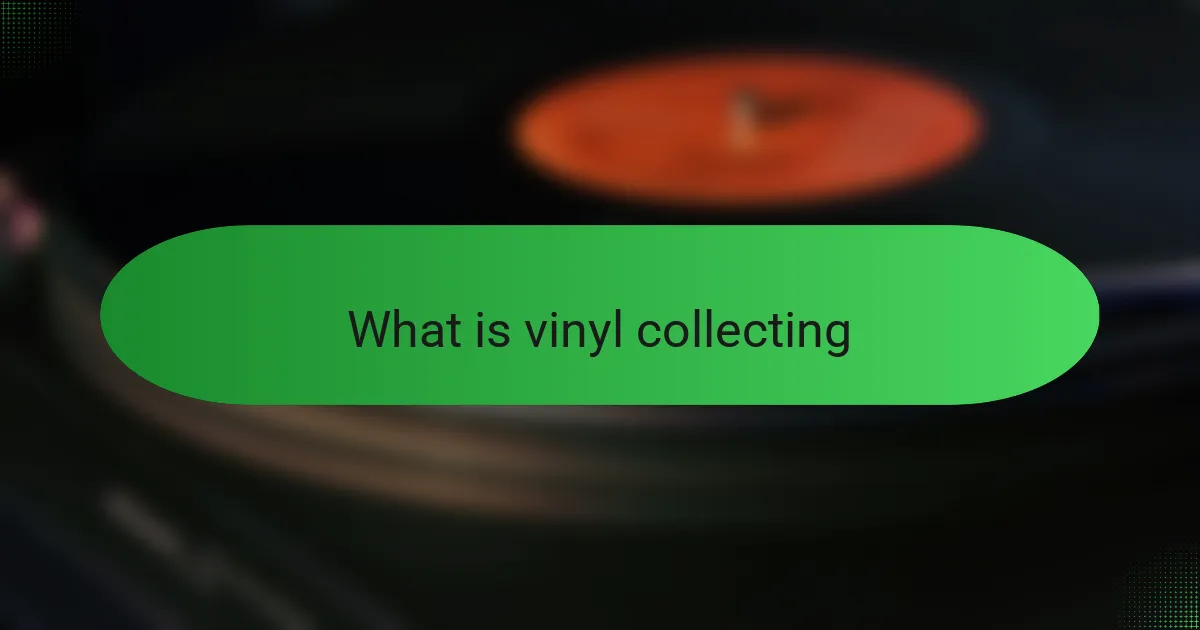
What is vinyl collecting
Vinyl collecting is more than just amassing records; it’s about preserving moments in music history. For me, holding a classic rock vinyl feels like time-traveling to when the music was first pressed, raw and authentic. Have you ever noticed how the crackle of a needle on vinyl adds warmth that digital formats just can’t replicate?
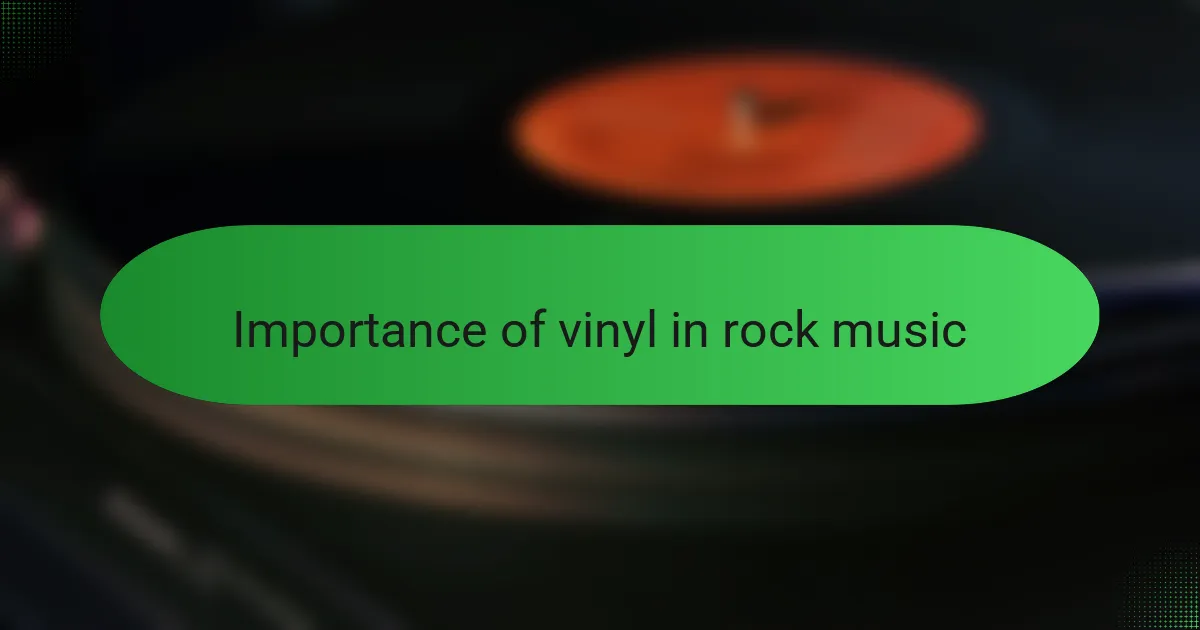
Importance of vinyl in rock music
Vinyl has this unique way of capturing the spirit of rock music that no other format quite nails. When I listen to an old Led Zeppelin or Pink Floyd record, the analog sound feels richer, almost as if the music is breathing right there in the room with me. Doesn’t that make you wonder why so many people still swear by vinyl despite all the streaming options?
To me, vinyl is more than sound quality—it’s a connection to the artists and the era they came from. The large album artwork and liner notes invite you into the world the band wanted to create, something you just can’t get on a tiny screen. Have you ever flipped through a record sleeve and felt that surge of nostalgia or excitement? That’s the magic of vinyl in rock music.
I think vinyl also demands a kind of patience and respect for the music. You can’t just skip around tracks instantly; you have to listen, absorb, and really be present with the album. That ritual, in my experience, deepens my appreciation and makes every classic rock record feel like a personal discovery. Would you agree that this engagement makes the music feel more alive?
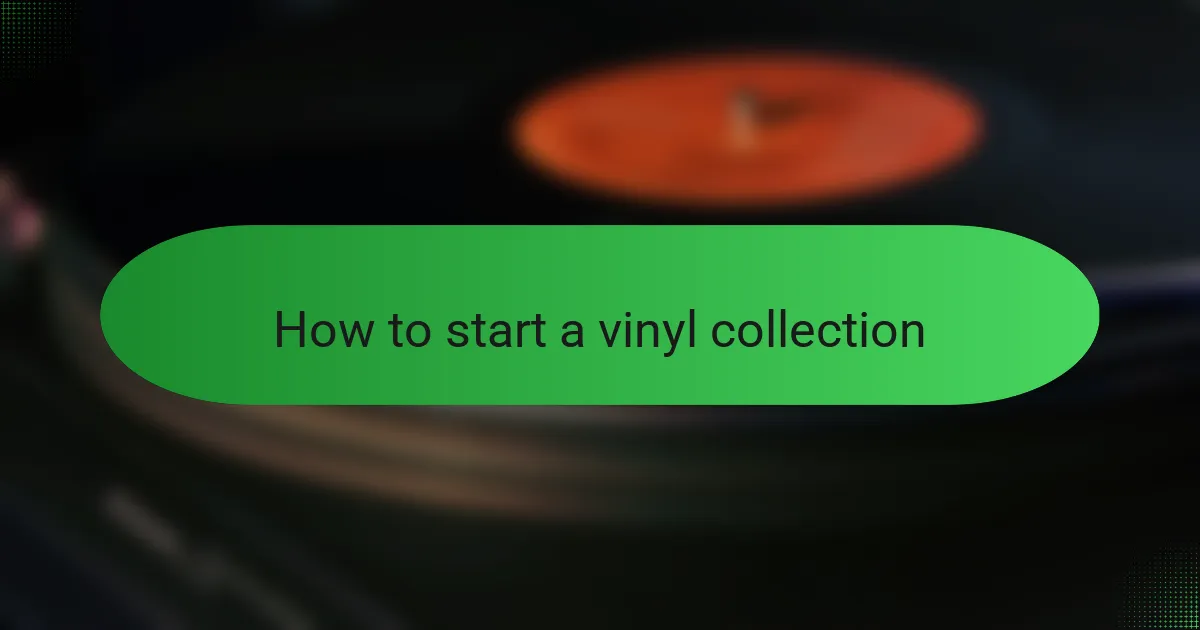
How to start a vinyl collection
Starting a vinyl collection might seem overwhelming at first, but I found that choosing a few favorite classic rock bands to focus on really helped me begin. Have you ever picked up a record purely because of the cover art or a song you loved? That’s often how my collection grew—one discovery led to another.
I remember my first purchase vividly: a worn-out Beatles album at a local record store. Holding that vinyl felt like connecting with music history in the most tangible way. What’s great is you don’t need to spend a fortune right away; thrift stores and online markets can surprise you with hidden gems if you take the time to explore.
For me, investing in a good turntable early on was key. It made all the difference hearing those classic riffs with genuine analog warmth. I ask myself now, how else could I truly appreciate the depth and soul of rock legends without the right setup? So starting simple but intentionally really set the foundation for a lifetime of collecting.
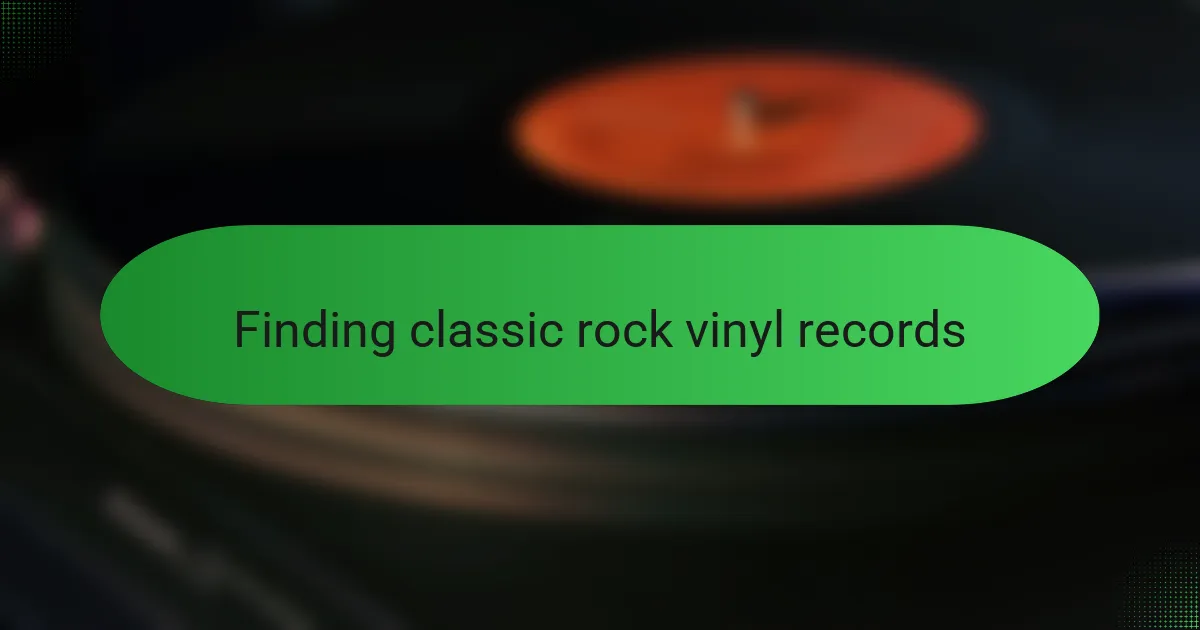
Finding classic rock vinyl records
Finding classic rock vinyl records often feels like a treasure hunt to me, full of unexpected delights and stories. I’ve spent countless weekends digging through crates at record shops, guided by the thrill of spotting a familiar band name or a colorful album cover. Have you ever felt that rush when you pull out a rare pressing, knowing you just uncovered something special?
Sometimes, the best finds come from the least expected places—garage sales, flea markets, or even online auctions where patience pays off. I remember once stumbling upon a nearly pristine Fleetwood Mac album at a local sale, and the excitement of bringing it home made the whole day unforgettable. Don’t you think that part of the joy is in the hunt itself, as much as the music?
I also learned to trust my instincts when it comes to condition and authenticity. It’s easy to get caught up in chasing only the rarest records, but I believe that finding a well-loved copy that sounds great beats an untouched but brittle pressing any day. After all, isn’t the music’s life in us, not just on the shelf?
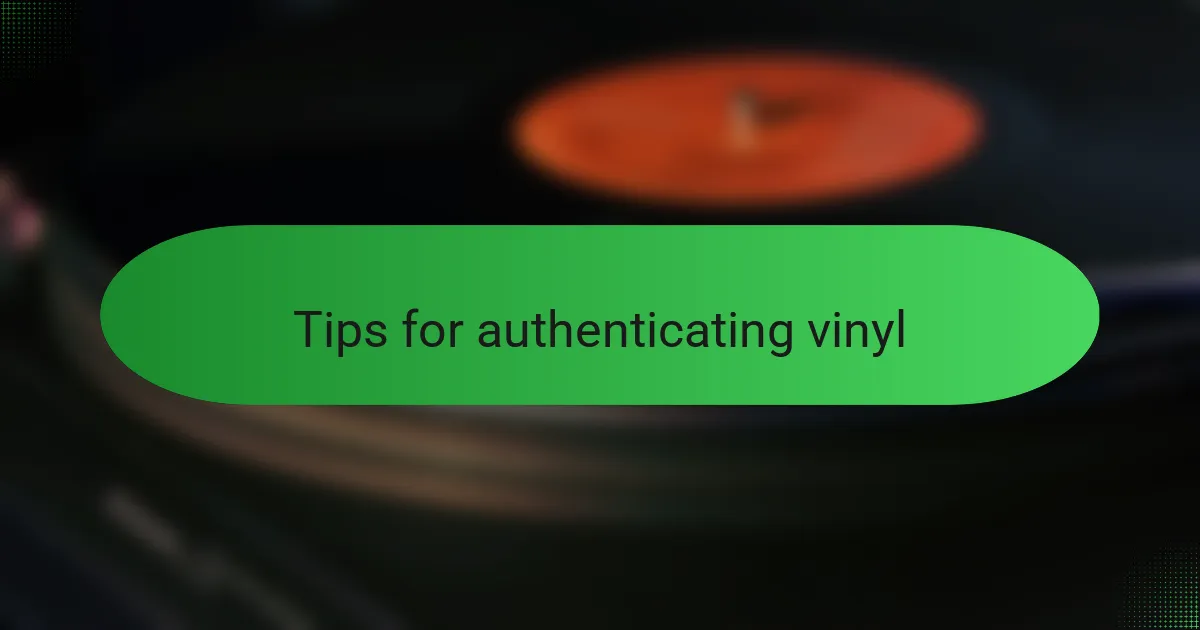
Tips for authenticating vinyl
Authenticating vinyl can feel intimidating at first, but I’ve learned some simple checks that make the process easier. For instance, examining the label closely often reveals unique fonts or logos specific to the original pressing. Have you ever held a record and noticed tiny details that made you second-guess if it was real? Those details can be the key to spotting authentic copies.
One trick I swear by is checking the runout grooves—the space near the center of the record. I remember finding a vintage Rolling Stones album, and the etched numbers there confirmed it wasn’t a bootleg. It’s amazing how these subtle markings carry so much history and truth about the vinyl’s origin. Do you take a moment to look for these when you pick up a record?
Condition also tells a story beyond just scratches or wear. When I compare a pristine classic with one that’s been played often, I realize the latter often holds more character, even if it’s not flawless. Authenticity isn’t just about mint condition; it’s about knowing you’ve got a genuine piece of rock heritage, imperfections and all. Does that perspective change how you view your collection?
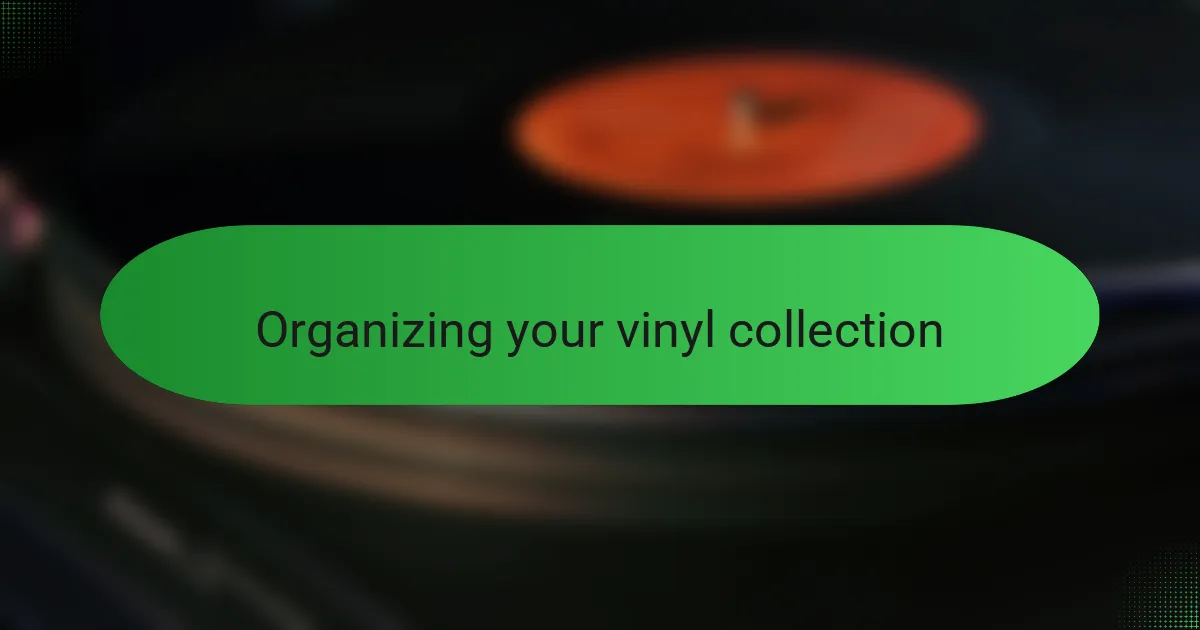
Organizing your vinyl collection
Organizing my vinyl collection felt like creating my own little museum of rock history. I started grouping albums by band and then by release year, which made it easier to track the progression of each group’s sound. Have you ever found yourself flipping through stacks just to hear how a band evolved over time? That simple system turned chaotic piles into a satisfying order.
I also invested in sturdy shelves with dividers, which was a game-changer. Not only does it protect the records, but it invites me to browse casually, like I’m in a favorite record store. There’s something special about having your collection visible and easy to access—it almost encourages more listening sessions. Can you imagine the difference between a pile on the floor and a neatly arranged set of vinyl waiting for you?
Beyond physical organization, I keep notes about each record—where I found it, its condition, or any personal memories tied to it. This little habit turns my collection into a storybook, adding layers of meaning beyond just the music. Doesn’t that make your vinyl feel even more like a treasure trove?
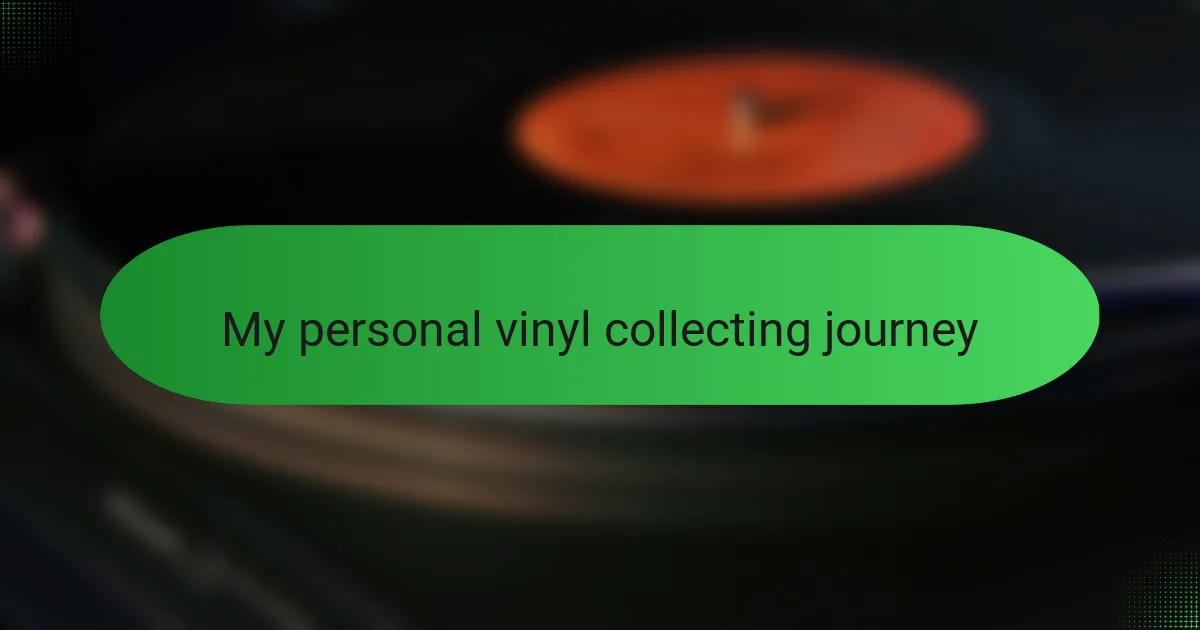
My personal vinyl collecting journey
My personal vinyl collecting journey started almost by accident. One crisp autumn afternoon, I wandered into a small, dusty record store and was instantly drawn to the worn-spined albums that seemed to whisper stories of long-gone concerts and late-night jams. Have you ever felt that magnetic pull toward something vintage and unpolished? That moment hooked me.
As my collection grew, so did my appreciation for the quirks and imperfections of each vinyl. I vividly remember a scratched-up Rolling Stones album that skipped a few times but had this raw energy you just can’t find in digital recordings. It made me realize collecting is less about perfection and more about capturing the soul of the music and the memories it holds.
What surprised me most was how each record reflected a chapter of my own life—whether it was a road trip soundtrack, a late-night listen, or a discovery with friends. Do you think music connects us not just to artists but to our own stories? To me, every addition to my shelf feels like adding a frame to a personal, sonic scrapbook.